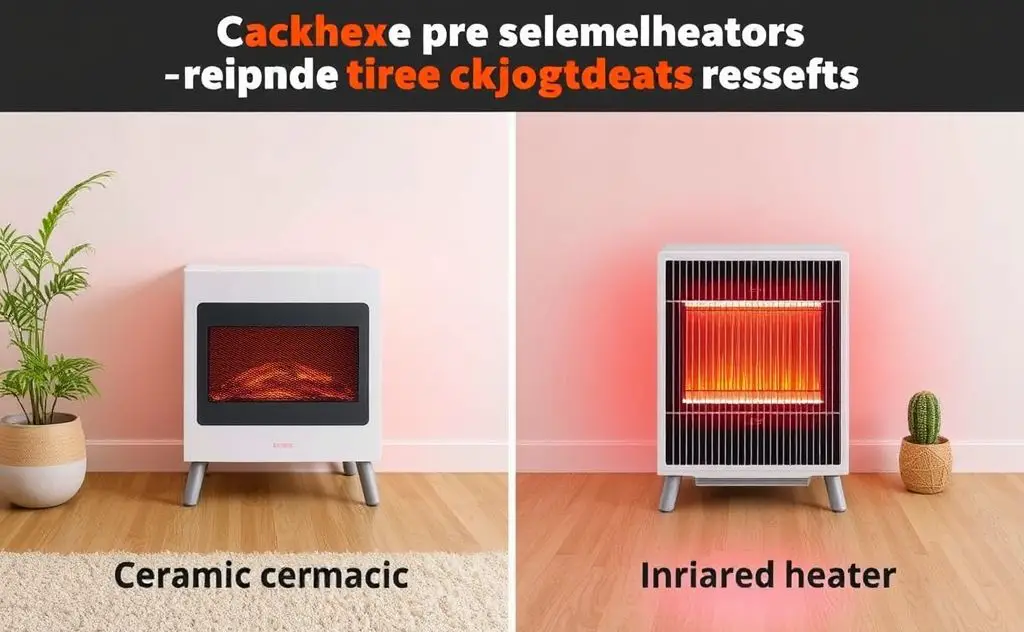Ceramic heaters provide quick, efficient warmth with ceramic plates, while infrared heaters deliver heat directly to objects, offering energy savings and comfort.
Choosing between ceramic and infrared heaters can be challenging. Both offer unique benefits for different heating needs. This guide breaks down the key differences to help you make an informed decision.

How Ceramic Heaters Work
Ceramic heaters use convection heating to warm spaces. They contain ceramic plates and aluminum baffles that heat up when electricity passes through them. A fan then circulates the warm air throughout the room.
Types of Ceramic Heaters
- Fan-forced ceramic heaters: Use a fan to distribute heat quickly
- Radiant ceramic heaters: Provide direct warmth without a fan
For those interested in stylish heating options, check out our guide to modern heater designs.

How Infrared Heaters Work
Infrared heaters emit electromagnetic radiation that directly warms objects and people in their path. Unlike ceramic heaters, they don’t heat the air. This makes them ideal for spot heating.
Infrared Heater Types
| Type | Best For |
|---|---|
| Quartz tube | Quick heating |
| Carbon fiber | Energy efficiency |
| Ceramic infrared | Durability |
Key Differences
Heating Method
Ceramic heaters warm the air while infrared heaters warm objects directly. According to Green Wave Distribution, infrared heaters are 100% energy efficient as they don’t lose heat to air circulation.
Heat Distribution
Ceramic heaters provide more even room heating while infrared offers targeted warmth. For whole-room heating, ceramic models perform better.
Energy Efficiency
Infrared heaters typically use less energy for spot heating. However, ceramic heaters may be more efficient for heating entire rooms.
Safety Considerations
Both heater types have safety features, but ceramic models generally run cooler. The WM Buffington Company notes that space heaters cause about 1,700 house fires annually, so always follow safety guidelines.
Safety Features
- Tip-over switches
- Overheat protection
- Cool-touch exteriors
For outdoor heating needs, consider our outdoor ceramic heater recommendations.
Which Should You Choose?
Best Uses for Ceramic Heaters
- Heating small to medium rooms
- Spaces needing consistent warmth
- Areas where noise isn’t a concern
Best Uses for Infrared Heaters
- Spot heating specific areas
- Outdoor spaces or garages
- Quiet environments
Cost Comparison
Infrared heaters generally have higher upfront costs but lower operating expenses. Ceramic heaters are more affordable initially but may cost more to run long-term.
Price Ranges
- Ceramic heaters: $30-$150
- Infrared heaters: $100-$500
Maintenance Requirements
Both heater types require minimal maintenance. Regular cleaning of filters (ceramic) and reflectors (infrared) will ensure optimal performance.
